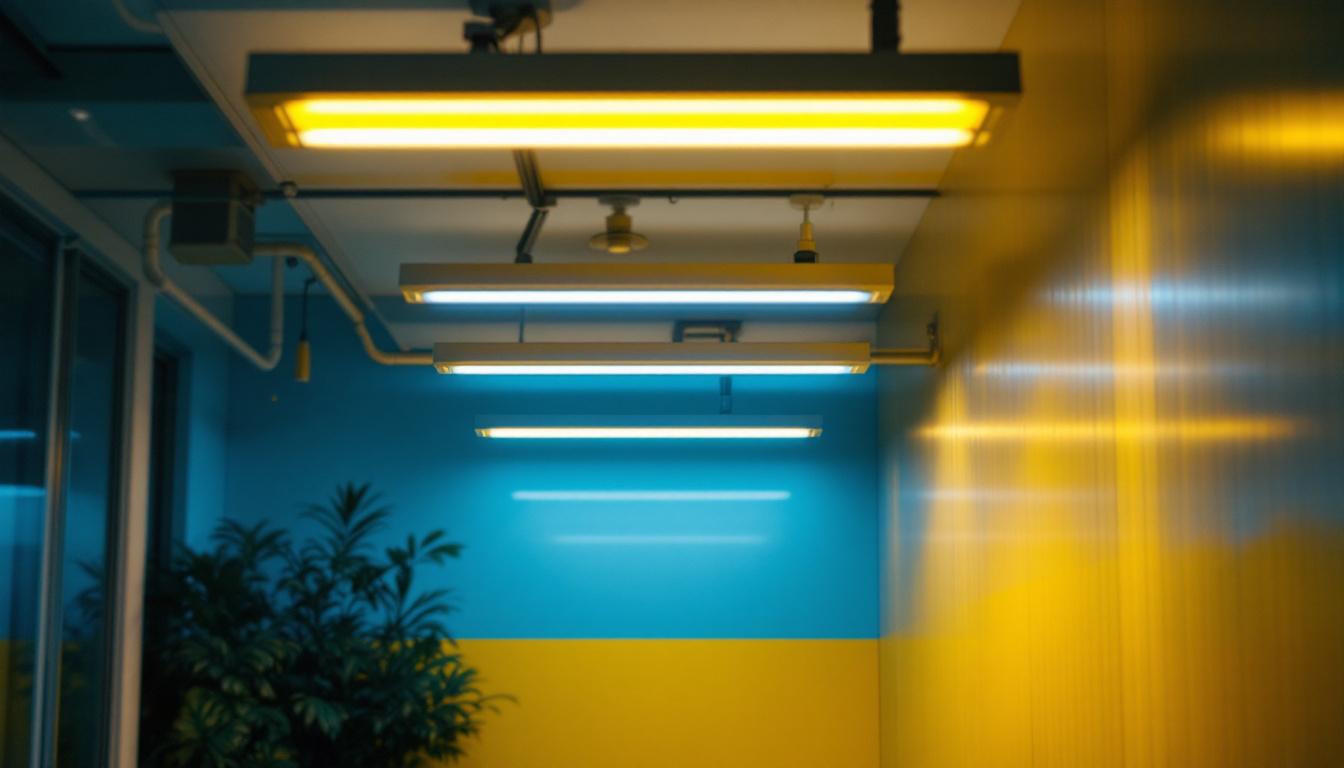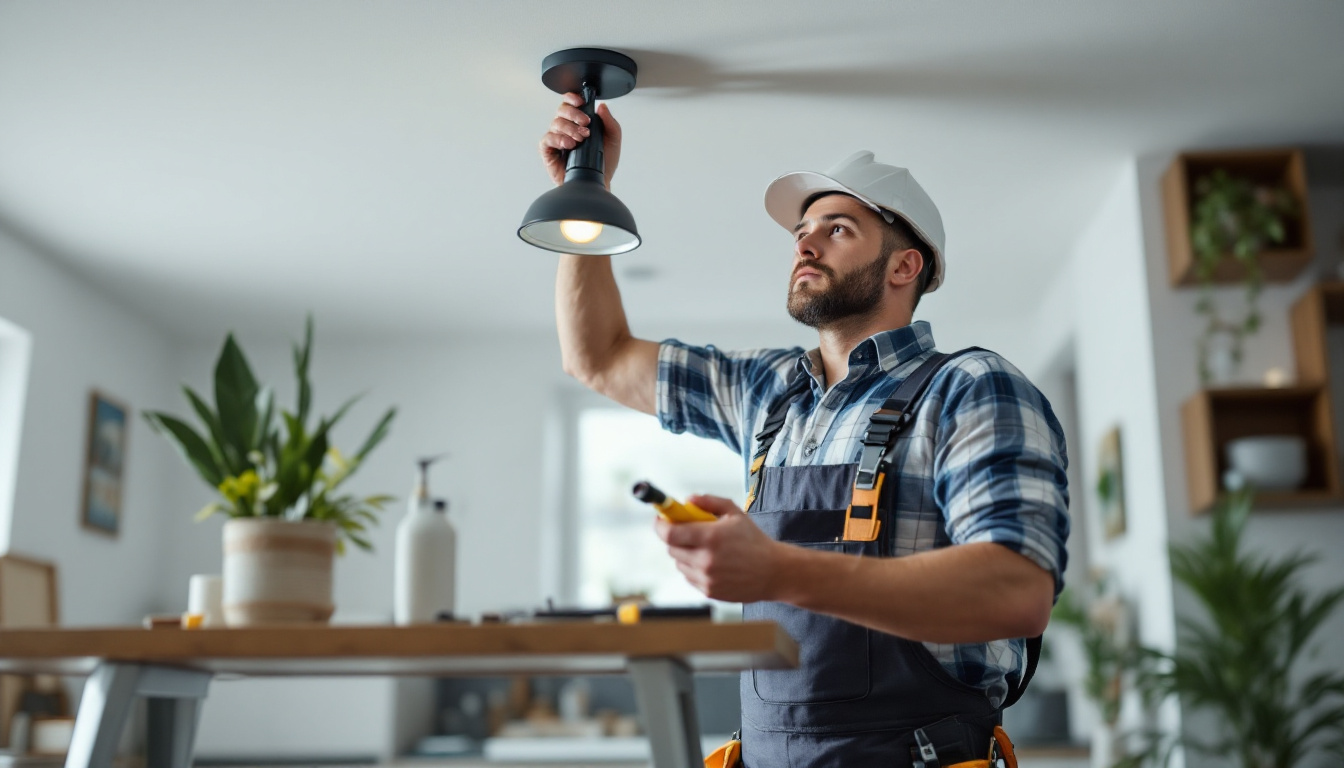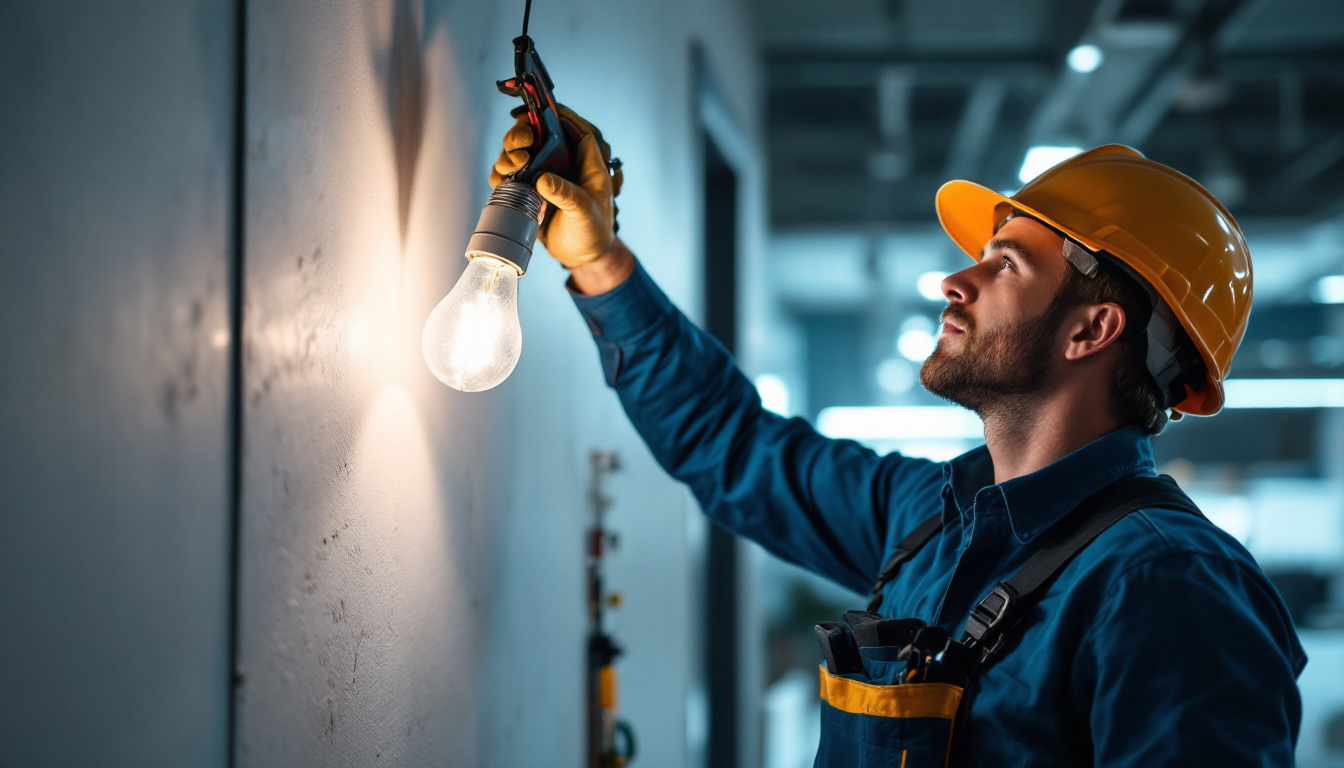
Fluorescent lighting has long been recognized as a cornerstone of energy-efficient illumination. For lighting contractors, understanding the nuances of fluorescent fixtures is not just beneficial; it’s essential. This article delves into the various aspects of fluorescent fixtures, including their types, advantages, installation considerations, and the future of fluorescent lighting in a rapidly evolving industry.
Fluorescent fixtures are designed to house fluorescent lamps, which operate by passing an electric current through a gas, producing ultraviolet light that excites a phosphor coating inside the lamp. This process results in visible light, making fluorescent fixtures a popular choice in both commercial and residential settings. Their energy efficiency and longevity compared to traditional incandescent bulbs have made them a staple in modern lighting design, contributing to lower energy bills and reduced environmental impact.
These fixtures come in various shapes and sizes, catering to different applications and environments. From long, linear tubes to compact designs, the versatility of fluorescent fixtures allows for creative and functional lighting solutions. Additionally, advancements in technology have led to the development of dimmable fluorescent options and fixtures that can be integrated into smart lighting systems, providing users with even greater control over their lighting environments.
Fluorescent fixtures can be categorized into several types, each serving a specific purpose. The most common types include linear fluorescent fixtures, compact fluorescent fixtures, and high-intensity discharge fixtures. Linear fluorescent fixtures are typically used in commercial spaces, such as offices and warehouses, where long tubes can provide broad, even lighting. Compact fluorescent fixtures, on the other hand, are ideal for residential applications, offering a smaller footprint while still delivering energy-efficient performance.
High-intensity discharge fluorescent fixtures are often utilized in industrial settings, providing powerful illumination for large areas. Each type of fixture has its unique advantages, and understanding these can help contractors choose the right solution for their clients. For instance, linear fixtures are often favored for their ability to illuminate wide spaces without creating harsh shadows, while compact fixtures are perfect for areas where space is at a premium, such as in small bathrooms or kitchens. Furthermore, specialized fixtures designed for specific tasks, such as task lighting in workspaces or accent lighting in retail environments, enhance the functionality of fluorescent lighting even further.
A typical fluorescent fixture consists of several key components, including the lamp, ballast, and reflector. The lamp is the source of light, while the ballast regulates the electrical current to the lamp, ensuring optimal performance. The reflector plays a crucial role in directing light where it is needed most, enhancing the efficiency of the fixture. Understanding these components is vital for contractors, as it allows for informed decisions when selecting fixtures and troubleshooting issues.
In addition to these primary components, modern fluorescent fixtures may also include features such as integrated sensors for occupancy detection or daylight harvesting, which automatically adjust the lighting based on the presence of people or the amount of natural light available. This not only maximizes energy savings but also enhances user comfort by providing appropriate lighting levels throughout the day. Moreover, maintenance considerations are essential; knowing how to replace lamps and troubleshoot ballast issues can significantly extend the life of the fixture and improve overall performance, making it crucial for both contractors and end-users to be well-versed in these aspects.
Fluorescent lighting offers numerous advantages that make it a preferred choice for many applications. One of the most significant benefits is energy efficiency. Fluorescent lamps consume considerably less energy than traditional incandescent bulbs, resulting in lower electricity bills and a reduced carbon footprint.
In addition to energy savings, fluorescent fixtures have a longer lifespan than incandescent options, often lasting up to 10 times longer. This longevity reduces the frequency of replacements, saving both time and money for contractors and their clients.
While the initial cost of fluorescent fixtures may be higher than incandescent alternatives, the long-term savings in energy consumption and maintenance make them a cost-effective choice. Contractors can present this information to clients, highlighting the return on investment that fluorescent lighting can provide.
Moreover, many regions offer incentives for energy-efficient lighting upgrades, further enhancing the financial appeal of fluorescent fixtures. Being knowledgeable about these programs can help contractors provide additional value to their clients.
Fluorescent lighting is also more environmentally friendly compared to traditional lighting options. With lower energy consumption, fluorescent fixtures contribute to reduced greenhouse gas emissions. Additionally, many fluorescent lamps are designed to be recyclable, minimizing waste and promoting sustainability.
Contractors who prioritize eco-friendly solutions can leverage the benefits of fluorescent lighting to appeal to environmentally conscious clients, positioning themselves as leaders in sustainable practices within the industry.
Proper installation of fluorescent fixtures is crucial for achieving optimal performance and longevity. Contractors should be familiar with the specific requirements for different types of fixtures, including mounting options, electrical connections, and ballast compatibility.
Understanding the layout of the space is also essential. Factors such as ceiling height, room dimensions, and existing electrical infrastructure can influence the choice and placement of fixtures. A well-planned installation not only enhances functionality but also improves the overall aesthetic of the space.
The ballast is a critical component in fluorescent fixtures, and selecting the appropriate type is vital for ensuring efficient operation. There are two main types of ballasts: magnetic and electronic. Magnetic ballasts are older technology, while electronic ballasts offer improved energy efficiency and better performance.
Contractors should consider the specific requirements of the fixtures being installed and the preferences of the client when selecting a ballast. Understanding the differences between these options can help contractors make informed decisions that enhance the overall lighting experience.
Safety is paramount when installing fluorescent fixtures. Contractors must adhere to local electrical codes and regulations to ensure compliance and safety. This includes proper grounding, securing fixtures, and following manufacturer guidelines.
Additionally, it’s important to educate clients about the safe disposal of fluorescent lamps, as they contain small amounts of mercury. Providing information on recycling programs can help clients manage their environmental impact responsibly.
Regular maintenance is essential for keeping fluorescent fixtures operating efficiently. Contractors should advise clients on best practices for maintenance, including cleaning fixtures and replacing lamps as needed.
Common issues with fluorescent lighting include flickering, dimming, and complete failure. Understanding the potential causes of these problems is crucial for effective troubleshooting. Often, issues can be traced back to faulty ballasts, improper installation, or aging lamps.
Flickering lights may indicate a problem with the ballast or a loose connection. Contractors should check the wiring and ensure that the ballast is compatible with the lamp type. Dimming lights could be a sign of aging lamps that need replacement, while complete failure may require a thorough inspection of the entire fixture.
By being proactive in identifying and addressing issues, contractors can help clients maintain optimal lighting conditions and extend the lifespan of their fixtures.
As technology continues to evolve, contractors should stay informed about advancements in fluorescent lighting and potential upgrades. LED technology, for instance, has gained popularity due to its even greater energy efficiency and longer lifespan compared to fluorescent options.
While fluorescent fixtures remain a strong choice for many applications, understanding the benefits of newer technologies can help contractors provide comprehensive solutions that meet the evolving needs of their clients.
The future of fluorescent lighting is shaped by ongoing advancements in technology and changing consumer preferences. While LED lighting is gaining traction, fluorescent fixtures still hold a significant place in the market due to their cost-effectiveness and efficiency.
Contractors should remain adaptable, embracing new technologies while recognizing the enduring value of fluorescent fixtures. By staying informed about industry trends and innovations, contractors can continue to offer relevant and effective solutions to their clients.
Recent innovations in fluorescent technology have focused on improving energy efficiency and reducing environmental impact. Newer fluorescent lamps are designed to operate at lower temperatures and with reduced energy consumption, making them even more appealing for energy-conscious consumers.
Additionally, advancements in ballast technology have led to more efficient and reliable performance, further enhancing the appeal of fluorescent fixtures. Contractors should keep abreast of these developments to provide clients with the most current and effective lighting solutions.
Educating clients about the benefits and features of fluorescent lighting is essential for promoting informed decision-making. Contractors can provide valuable information on energy savings, environmental impact, and maintenance practices to help clients understand the advantages of choosing fluorescent fixtures.
By fostering awareness and understanding, contractors can build trust and credibility with clients, positioning themselves as knowledgeable experts in the field of energy-efficient lighting.
Fluorescent fixtures remain a vital component of energy-efficient lighting solutions. For lighting contractors, understanding the intricacies of these fixtures—from their types and components to installation and maintenance—is essential for providing effective and sustainable solutions to clients.
As the industry continues to evolve, staying informed about advancements in technology and emerging trends will empower contractors to adapt and thrive in a competitive market. By embracing the benefits of fluorescent lighting while remaining open to new innovations, contractors can ensure they are well-equipped to meet the diverse needs of their clients.
Ready to enhance your lighting solutions with the efficiency and sustainability of fluorescent fixtures? At LumenWholesale, we provide lighting contractors with the highest quality, spec-grade lighting products at unbeatable wholesale prices. Say goodbye to local distributor markups and hello to our extensive selection that meets rigorous industry standards. With free shipping on bulk orders, you can trust that you’re getting premium lighting at the best value — all without hidden fees or compromises. Elevate your lighting projects by choosing LumenWholesale, where quality, affordability, and convenience come together. Wholesale Lighting at the Best Value is just a click away.

Explore the surprising relationship between LED lights and heat generation, and discover what clients expect lighting contractors to know.

Discover innovative cost-saving strategies for lighting contractors focusing on ceiling light mounting brackets.

Explore the science of studio lighting with insights tailored for lighting contractors.

Discover how understanding the nuances of light bulb replacement as normal wear and tear can give you a competitive edge in securing more lighting contracts.